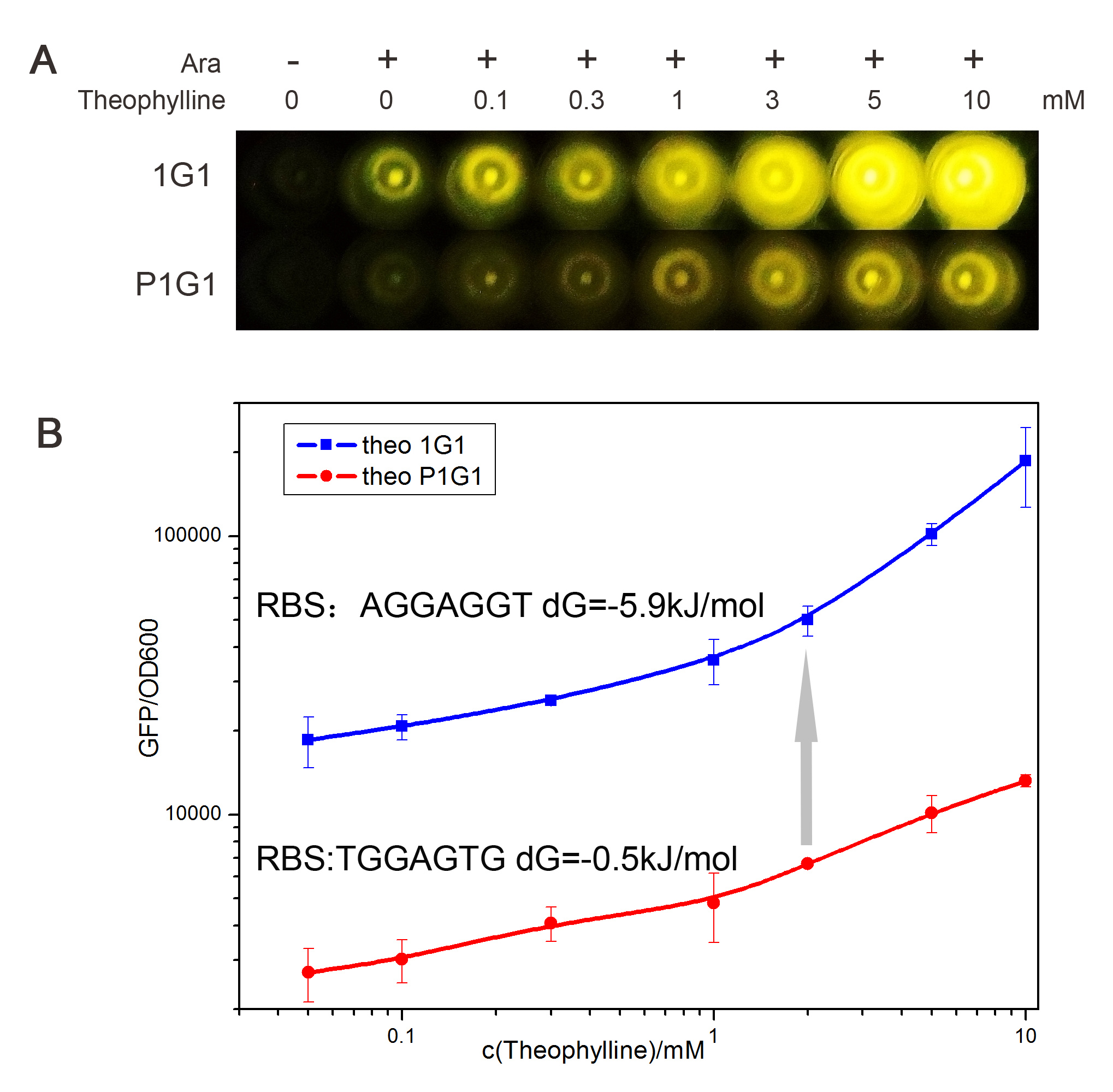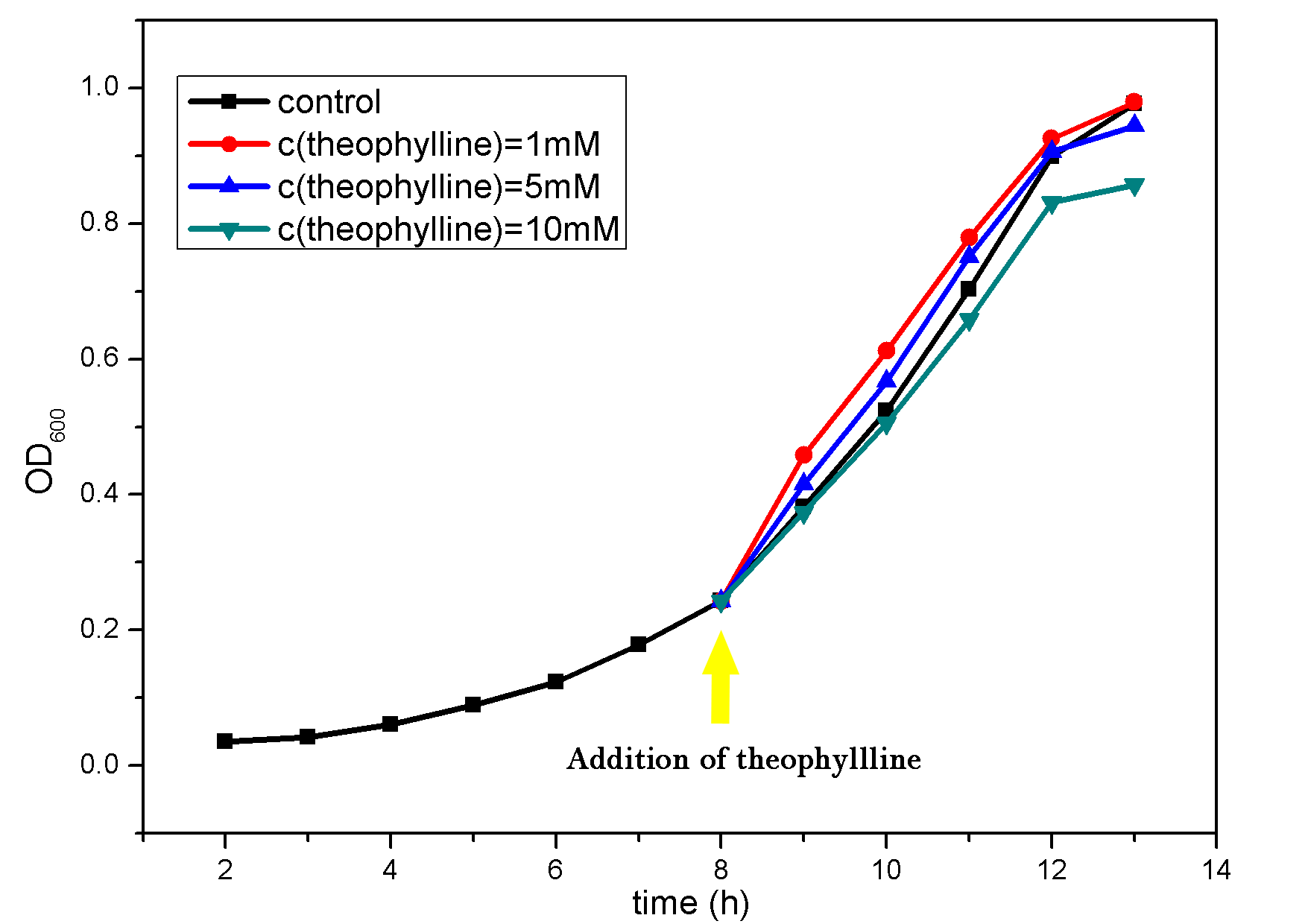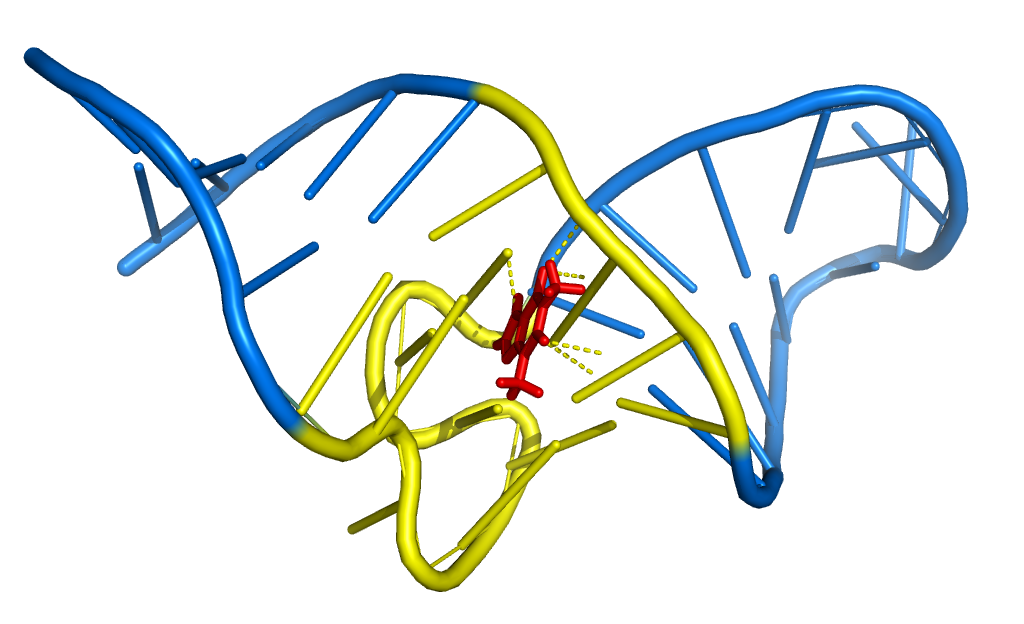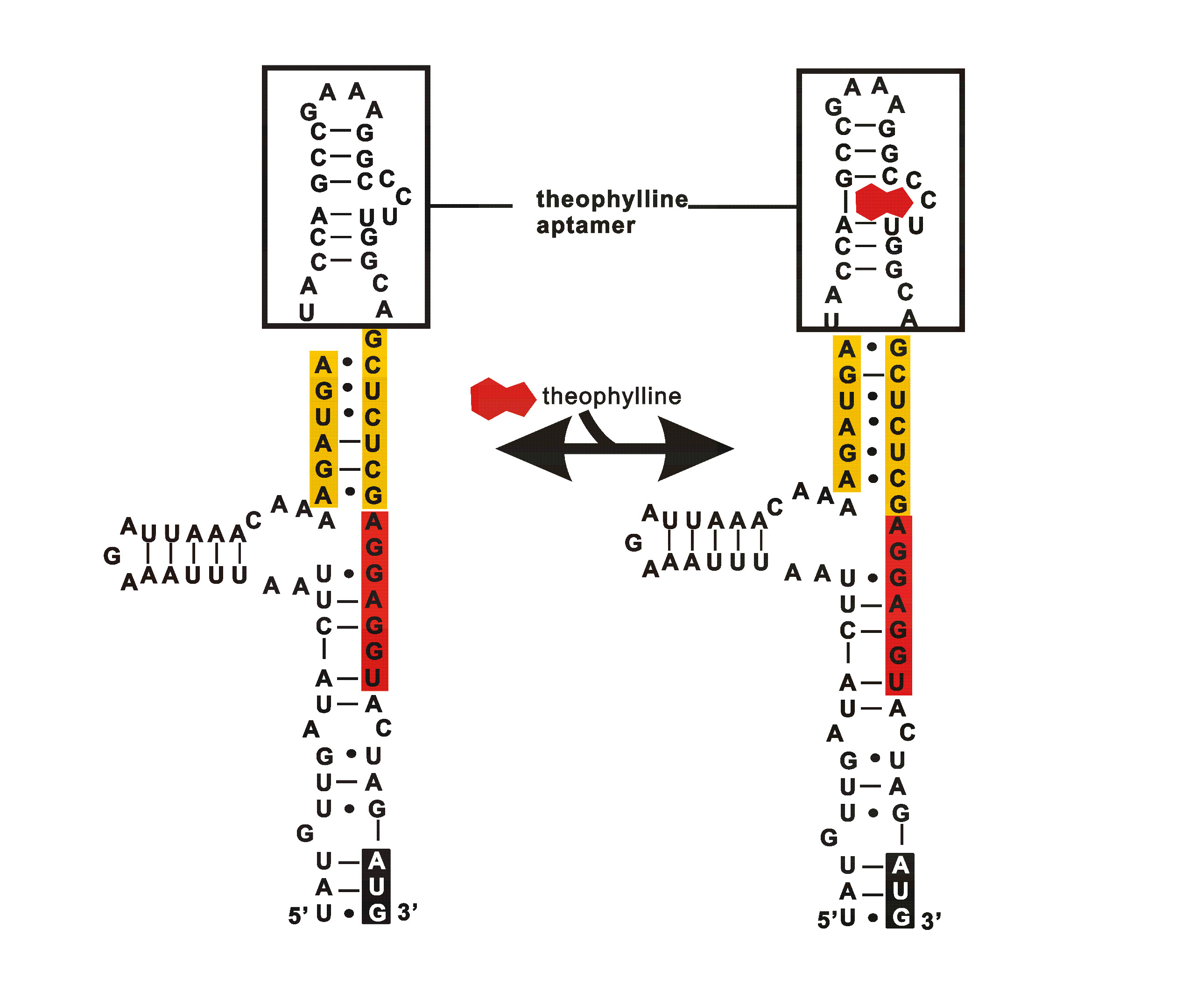Part:BBa_K598001
Theophylline Responsive Riboswitch 1G1 with Engineered RBS+GFP generator
This is a GFP generator regulated by theophylline responsive riboswitch. mRNA with a theophylline riboswitch in it responds to theophylline concerntration, producing different fluorescence strength of GFP. Regulated by different promoters, it would be used to demonstrate theophylline responsive curve, providing data for modeling.
Sequence and Features
- 10COMPATIBLE WITH RFC[10]
- 12COMPATIBLE WITH RFC[12]
- 21INCOMPATIBLE WITH RFC[21]Illegal XhoI site found at 71
- 23COMPATIBLE WITH RFC[23]
- 25COMPATIBLE WITH RFC[25]
- 1000INCOMPATIBLE WITH RFC[1000]Illegal BsaI.rc site found at 730
Background
Riboswitches are structured non-coding RNA domains performing as genetic control elements, regulating gene expression through ligand-RNA interactions without assistance of proteins. Several natural riboswitches have been reported, sensing small molecules including vitamin B1 and B12, FMN, SAM, lysine, guanine, adenine, TPP and theophylline [1]. Various mechanisms are utilized to regulate gene expression, ranging from transcription initiation to translation attenuation.
Theophylline responsive riboswitches have been widely studied in recent years. Theophylline is small molecule which is passable through bacterial cytomembrane, but not an essential nutrient of bacteria. Although theophylline has moderate toxicity leading to growth inhibition in logarithmic phase with 15mM theophylline in LB medium, this theophylline responsive riboswitch shows an approving regulation curve under 10mM theophylline concentration with negligible growth inhibition in M9 liquid medium (Fig.1).
Experimental Data
Parental 1G1
We adopted the original theophylline responsive riboswitch, named Parental 1G1 (P1G1) in our project, designed by Beatrix Suess on Nucleic Acids Research, as a candidate of our RNA controller toolbox. Stereo representation of the three-dimensional structure of theophylline aptamer is schematized in Fig.2.
Theophylline responsive riboswitch P1G1 integrates the theophylline aptamer with a helical communication module based on a ligand–dependent one-nucleotide slipping mechanism (Fig.3) [2]. This structural element lies at a position just interfering with translation in the non ligand-binding form. Addition of ligand shifts the inhibitory secondary structure element that is originally closed to RBS to a distance that permits efficient translation. This slippage mechanism regulating gene expression makes it different from natural riboswtiches those are based on sequenstration or antitermination [3].
We constructed a device via PCR and standard assembly. It composes of RNA controller P1G1 which contains original RBS sequence and GFP as reporter gene (Fig.4). A graph of predicted secondary structure (by mFold) of translation initiation region with introduced regulatory element P1G1 containing theophylline aptamer (boxed) and stem-loop structure is shown in Fig.4. The proposed theophylline-mediated slipping mechanism of the bridge domain is shown schematically as well.

We used GFP fluorescence intensity to present the ability of P1G1 riboswitches to modulate downstream gene expression. GFP fluorescence intensity measured and with increasing concentrations of theophylline is shown in Fig.5. P1G1 displays a 6-fold activation ratio of the absence to presence of 10mM theophylline (Fig.6). Inspection of the highest translation rate reveals that although high concentration of ligand fully motivates translation, the GFP fluorescence intensity is still low, indicating relatively low translation strength. However, we expect wider translation strength available for theophylline riboswitch, thus the performance of P1G1 needs to be genetically optimized.

//function/reporter/fluorescence
//regulation/positive
//rna/riboswitch
regulator
| chassis | E. coli DH5α |
| emit | 511 nm |
| excite | 501 nm |
| ligands | theophylline |
| n/a | Theophylline Responsive Riboswitch 1G1 with Engineered RBS+GFP generator |
| output | GFP |
| rbs | robust |
| resistance | Chloramphenicol |




